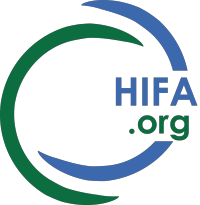A new paper from BMC Human Resources for Health. Citation, abstract, selected extracts, and comment from me below.
CITATION: WHO competency framework for health authorities and institutions to manage infodemics: its development and features
Sara Rubinelli, Tina D. Purnat, Elisabeth Wihelm, Denise Traicoff, Apophia Namageyo-Funa, Angus Thomson, Claire Wardle, Jaya Lamichhane, Sylvie Briand & Tim Nguyen
Human Resources for Health volume 20, Article number: 35 (2022)
https://human-resources-health.biomedcentral.com/articles/10.1186/s12960...
ABSTRACT
Background: In April 2020, the World Health Organization (WHO) Information Network for Epidemics produced an agenda for managing the COVID-19 infodemic. “Infodemic” refers to the overabundance of information—including mis- and disinformation. In this agenda it was pointed out the need to create a competency framework for infodemic management (IM). This framework was released by WHO on 20th September 2021. This paper presents the WHO framework for IM by highlighting the different investigative steps behind its development.
Methods: The framework was built through three steps. Step 1 included the preparatory work following the guidelines in the Guide to writing Competency Framework for WHO Academy courses. Step 2 was based on a qualitative study with participants (N = 25), identified worldwide on the basis of their academic background in relevant fields of IM or of their professional experience in IM activities at the institutional level. The interviews were conducted online between December 2020 and January 2021, they were video-recorded and analyzed using thematic analysis. In Step 3, two stakeholder panels were conducted to revise the framework.
Results: The competency framework contains four primary domains, each of which comprised main activities, related tasks, and knowledge and skills. It identifies competencies to manage and monitor infodemics, to design, conduct and evaluate appropriate interventions, as well as to strengthen health systems. Its main purpose is to assist institutions in reinforcing their IM capacities and implementing effective IM processes and actions according to their individual contexts and resources.
Conclusion: The competency framework is not intended to be a regulatory document nor a training curriculum. As a WHO initiative, it serves as a reference tool to be applied according to local priorities and needs within the different countries. This framework can assist institutions in strengthening IM capacity by hiring, staff development, and human resources planning.
SELECTED EXTRACTS
IM competencies are framed under four main concepts that mirror the management of epidemics...
Social listening: It refers to the systematic collection, analysis, and interpretation of people's questions, concerns, information voids, and narratives, includinf mis/disinformation that are exchanged through off-and online communication channels. Social listening insights are analysed with insights from other kinds of epidemiological, behavioral, informaton ecosystem and health information system insights, through integrated analysis to diagnose barriers and enablers of people's adherence to health guidance and enactment of health behaviors.
Narratives: It refers to both the identification of narratives that refer to a theme of conversaiton online, including mis/disinformation and to the design, dissemination, and evaluation of narratives that can strengthen resilience to infodemics.
Distrust: It refers to both the importance of trust in health authorities, health response, and the need to identify distrust of recommendations and to promote and evaluate the impact of interventions to build institutional collaboration and engagement to protect people and lower the risks of the disease.
Interventions: In the field of IM, this refers to actions aimed at flattening the epi curve and building resilience to infodemics among populations...
Main activities needed to flatten the epi curve:
Workstream 1. Measure and monitor the impact of infodemics during health emergencies...
Workstream 2. Detect and understand the spread and impact of infodemics...
Workstream 3. Respond and deploy interventions that mitigate and protect against the infodemic and its harmful effects...
Workstream 4. Evaluate infodemic interventions and strengthen the resilience of individuals and communities to infodemics...
Workstream 5. Enable the development, adaptation, and application of tools for the management of infodemics.
COMMENT (NPW): I have not had a chance to review this framework in depth, but my initial reading suggests that it overlooks a fundamental point: As we have discussed in depth here on HIFA, the surest way to address health misinformation is to improve the availability of relevant, reliable information, and to help people differentiate reliable information from misinformation.
I look forward to hear your thoughts on the above.
Best wishes, Neil
Coordinator, HIFA project on COVID-19, supported by University of Edinburgh
https://www.hifa.org/projects/covid-19
Let's build a future where every person has access to reliable healthcare information and is protected from misinformation - Join HIFA: www.hifa.org
HIFA profile: Neil Pakenham-Walsh is global coordinator of the HIFA global health movement (Healthcare Information For All - www.hifa.org ), a global community with more than 20,000 members in 180 countries, interacting on six global forums in four languages in official relations with WHO. HIFA brings stakeholders together to accelerate progress towards universal access to reliable healthcare information.
Twitter: @hifa_org neil@hifa.org

